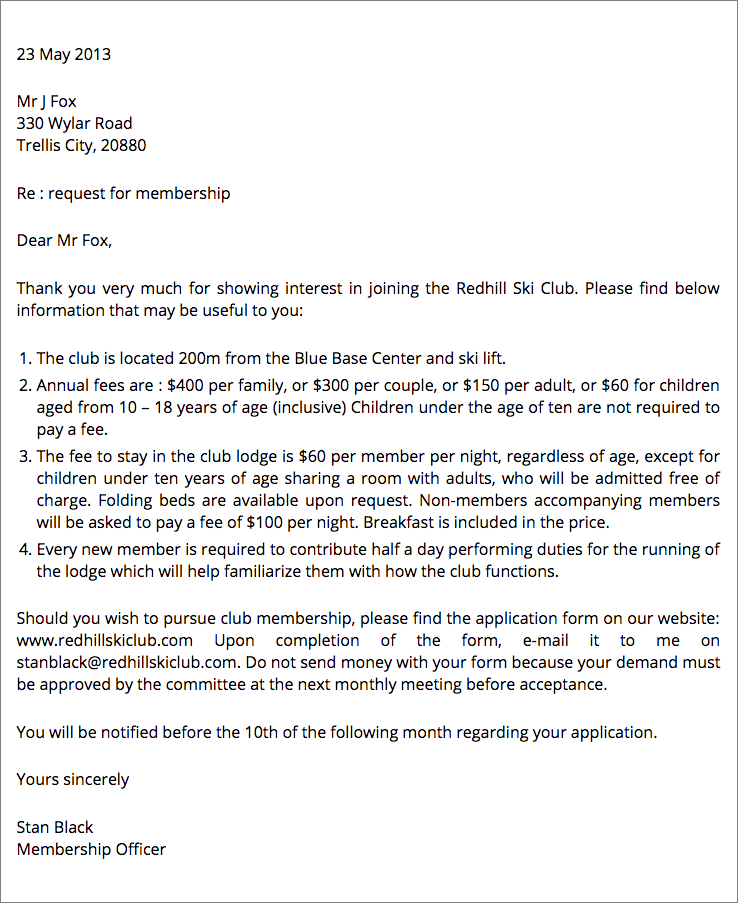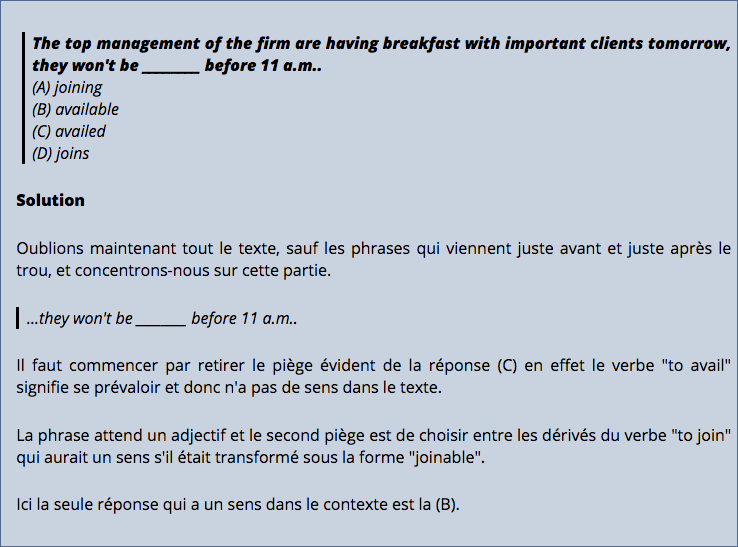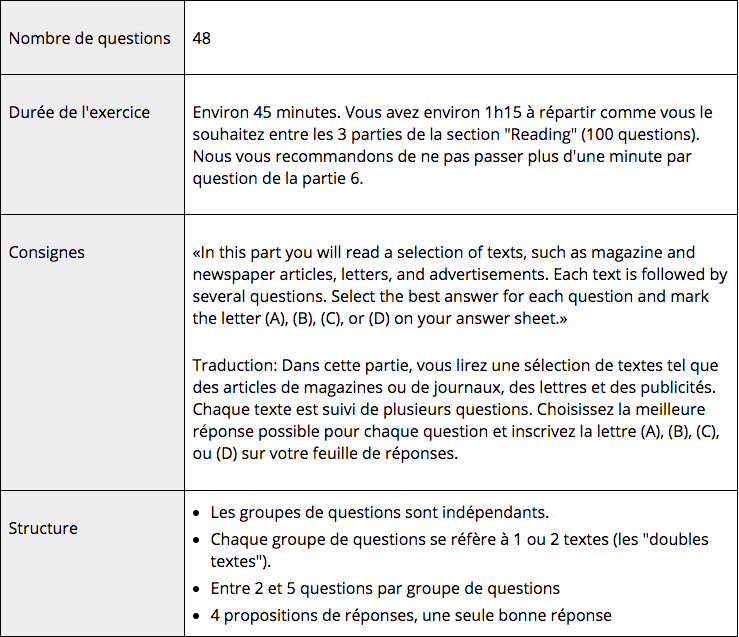TOEIC Reading - Presentation
Presentation of the TOEIC Reading test
TOEIC Reading - Presentation
TOEIC Reading - Structure
The written comprehension section or "Reading" of TOEIC includes 100 questions and lasts 1 hour and 15 minutes to be distributed between the three parties at the candidate's discretion:
- Incomplete sentences
- Incomplete texts
- Reading multiple written contents
To learn more about the TOEIC format : What is the TOEIC made up of?
TOEIC Reading - Incomplete Sentences
TOEIC Reading - Incomplete Sentences - Structure
TOEIC Reading - Incomplete Sentences - Example
This section of the TOEIC Reading test consists of 40 independent sentences each missing a word (or group of words). You must complete the sentence with one of the four possible answers.
TOEIC Reading - Incomplete Sentences - Strategies
Along with Parts 3 and 4, Part 5 is often the most problematic for many people, and this is a good thing, because it is in Part 5 where you can quickly improve your performance if you follow certain basic guidelines.
- Time management : In the "reading" section of the TOEIC , you have 75 minutes to answer 100 questions. That's 45 seconds per question.
- Prioritize global understanding : Often there is no need to understand the sentence to be able to answer it.
To learn more about the TOEIC and strategies for passing it: TOEIC on PrepMyFuture.com .
TOEIC Reading - Incomplete texts
TOEIC Reading - Incomplete texts - Structure
In this part of the TOEIC Reading You have a text in which a word (or group of words) is missing. You must complete the text with one of the 4 answer options. Each test contains 3 to 4 missing words.
TOEIC Reading - Incomplete texts - Example
Answers: 1-C / 2-B
TOEIC Reading - Incomplete Texts - Strategies
Part 6 is quite short: 12 questions spread over 4 texts, typically letters, emails or memos. Generally speaking, the tone of the texts is formal and typical of the workplace or everyday life.
- Understanding sentences in context: Part 6 is very similar to Part 5, but with one important difference. Since it's a text rather than a sentence, you often need to read the entire text before choosing your answer, as sometimes the correct answer is only obvious after reading the entire paragraph.
- Understanding verb tenses: Often in Part 6, the four answer choices are four forms of the same verb. Before choosing the appropriate form of a verb, it is essential to define the tense context. This is usually (but not always) defined in the sentence preceding or following the verb.
TOEIC Reading - Reading Comprehension
Text comprehension - Structure
This part of the TOEIC Reading is the longest. You must read a series of independent texts and “double texts” (texts containing two documents).
The subjects and types of texts are varied: extracts from magazines, newspapers, letters, etc.
For each text you must answer several questions (2 to 5 per text). For each question you must choose one of the 4 options.
TOEIC Reading - Reading Comprehension - Example

TOEIC Reading - Reading Comprehension - Strategies
Part 7 of the TOEIC Reading assesses your comprehension of short texts of various kinds. Part 7 is the longest part of the TOEIC (17 pages out of the 25 in the Reading Section; 48 questions out of 100), and the one that takes the most time.
- Time management: It's essential not to waste time, or you'll run out of time at the end of the test. An important tip is to always start by reading the questions before reading the texts. As we've already noted about the test, you don't need to understand everything to answer correctly.
- Skimming and scanning: Skimming is like skimming for a comprehensive understanding. Scanning is like searching for specific information. Depending on the question being asked, one method or the other will be necessary.

Discover the PrepMyFuture platform
Discover
PrepMyFuture
TOEIC Listening and Reading
Share







